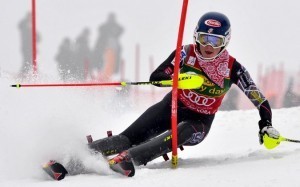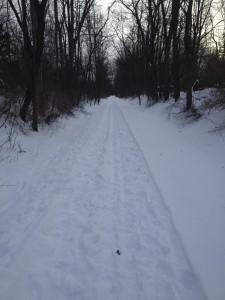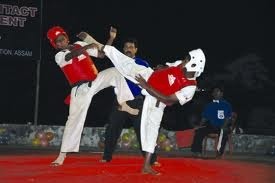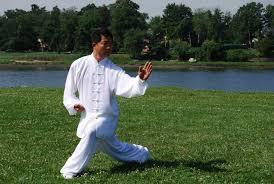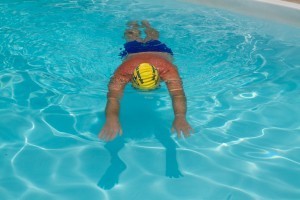Terry Laughlin's Blog, page 25
March 18, 2014
Simple Practice Plan
I’ve been training in swimming, and in other activities, for so many years that I take it for granted what a practice may look like. I also realize our insider swimming jargon can confuse a new initiate.
I was reminded of this recently: my wife does not have a trained swimming background. She has been working on her TI swimming, and has also recently starting up some self-coaching in Chi Running. The other day she asked me how to organize her practice time. I rattled off what I thought would be a simple plan for her time but she just looked at me with glazed eyes, and then insisted I help her write it down. So, I was reminded that a Simple Practice pattern is not necessarily so simple to someone has not been involved in the culture of the sport very long.
So, for her benefit, possibly for yours, and definitely for my own in helping other swimmers, I wrote out some notes for how to begin organizing the practice time.
Here are some steps you can take to set up your own Simple Practice pattern.
**
Click here to read more of this post…
To view hundreds of articles of coaching advice and answers to swimmer’s questions on training and technique please visit Coach Mat’s Smooth Strokes blog.
The post Simple Practice Plan appeared first on Total Immersion.
March 15, 2014
Breathing Patterns
We take it for granted that we can breathe while running or while doing just about anything on land. Most probably pay no attention to it, as we can rely on our parasympathetic nervous system to keep exchanging that air for us without our conscious control.
But we suddenly become aware of our need to figure this out when in water. Since air is only available to the swimmer in a unobstructive way for a fraction of each stroke cycle – we have to actually think carefully about when and how to breathe so we don’t provoke panic and we don’t induce unnecessary exhaustion.
**
Click here to read more of this post…
To view hundreds of articles of coaching advice and answers to swimmer’s questions on training and technique please visit Coach Mat’s Smooth Strokes blog.
The post Breathing Patterns appeared first on Total Immersion.
March 11, 2014
Technique And Fitness Unite
It is a great misconception that somehow Technique Training and Fitness Training are viewed as separate activities in the water, as if they are in conflict with each other in some way.
Because it is impossible to separate Technique Training from Fitness Training.
What????
Yes, it’s true. Let me explain my spin on it.
All movement requires the body to metabolize energy and supply it to the brain and muscles. And all repetitive movement is programming – programming how energy will be directed by the brain and used by the muscles. All swim training is habit-building – smart swim training and stupid swim training – all of it is either building smart habits or building wasteful ones. All that repetitive motion is hard-wiring the brain and fixing the muscle memory to use energy in a certain way. Whether you move with low intensity or high, you are programming your body to use energy in a certain way, and the strongest program is what will take over when you are under pressure.
**
Click here to read more of this post…
To view hundreds of articles of coaching advice and answers to swimmer’s questions on training and technique please visit Coach Mat’s Smooth Strokes blog.
The post Technique And Fitness Unite appeared first on Total Immersion.
March 9, 2014
How Does Speed Happen?
Speed, and more importantly – sustainable speed – is dependent on both technique and fitness, not one or the other. The training must not be separated from each other. And the properties of water create a situation where the swimmer is instantly penalized for neglecting to develop the two together – penalized by being slower than he should be and/or exhausted way before he should be.
And they are not equals for those who pursue highest speed potential – fitness is subordinate to technique, as I will argue below and in Part 2.
**
Click here to read more of this post…
To view hundreds of articles of coaching advice and answers to swimmer’s questions on training and technique please visit Coach Mat’s Smooth Strokes blog.
The post How Does Speed Happen? appeared first on Total Immersion.
March 4, 2014
What Is Your Target?
Let’s take a look at this perspective then enjoy a practice set to apply it…
“Our actions are shaped by our intentions,” is the first sentence in the chapter entitle What Is Your Target?, in Part 2 of of Zen Golf, by Dr. Joseph Parent.
He goes on to write, “When I ask golfers the purpose of making a golf swing, most of them answer, ‘To hit the ball.’”
My translation to swimming: When I ask swimmers the purpose of making the stroke, most of them answer, ‘To push back on the water – as quickly and powerfully as possible.’
**
Click here to read more of this post…
To view hundreds of articles of coaching advice and answers to swimmer’s questions on training and technique please visit Coach Mat’s Smooth Strokes blog.
The post What Is Your Target? appeared first on Total Immersion.
March 1, 2014
Why Count Strokes?
Why should I count my strokes?
Here is my short list of reasons:
My stroke quality is predominantly a neurological skill
The brain needs feedback in order to evaluate and make improvements in its motor-control over the stroke.
Counting strokes is the first, basic form of objective feedback I can learn and master
It reveals the first critical feature of swimming speed and swimming efficiency (using my limited energy supply most effectively).
I can conveniently use it in the pool
I can do it by myself
I can use it while I am swimming
I can immediately connect any changes I make to my body position or stroke pattern to an effect on the stroke count
No batteries required
**
Click here to read more of this post…
To view hundreds of articles of coaching advice and answers to swimmer’s questions on training and technique please visit Coach Mat’s Smooth Strokes blog.
The post Why Count Strokes? appeared first on Total Immersion.
February 23, 2014
The (Re-) Education of a Competitive Swimmer
This is a guest post by TI Coach John Fitzpatrick, head coach of the Chicago Blue Dolphin swim instruction and fitness program.
I’d been a swimmer since early childhood, but I don’t feel like I started to understand swimming until the fall of 2000 when someone recommended I read Total Immersion: The Revolutionary Way to Swim Better, Faster, and Easier.
Reading the book began a journey, which, before long, led to my becoming a TI Coach. TI taught me a new pain-free way of swimming, which I thought everyone should learn.
Birmingham MI, where I grew up, was kind of a swimming hotbed. I started lessons at age 3, and joined a swim team soon after. I continued through high school, specializing in backstroke and individual medley.
We trained in the usual way, doing long, intense workouts for months on end, then radically reducing volume and intensity over a week to 10 days. We endured constant fatigue and depressingly slow times for several months, in expectation of swimming much faster in a ‘tapered and shaved’ final meet. Or so the theory went.
For me it seldom seemed to work that way and enduring the pain and tedium came to seem pointless. By the end of high school, I literally hated swimming and didn’t go near a pool for years after.
After graduating from the University of Michigan, I moved to Chicago for work in 1997. I joined a Masters team because swimming seemed like the sensible way to get back i shape and the team provided a great social outlet as well. I was soon back into a familiar training routine—attending four to five workouts per week, and chasing whoever was ahead of me in the lane.
But as the workouts picked up, my shoulders began to ache, which eventually became searing pain on every stroke. When I told a friend how discouraging this was, he suggested I read the TI book. That was so eye-opening, I immediately read the 4-stroke TI book Swimming Made Easy
For the next five months, I didn’t so much as look at the pace clock. Instead I spent hours each week lap learning and refining drills from TI’s VHS tapes. I found myself absorbed by new sensations and distinctions I experienced in the drills, then applied in short, easy swims.
My Masters teammates thought I was crazy, but not only did my pain disappear (and has never returned) but for the first time in my life I was actually paying attention to how I moved through the water.
Among competitive swimmers, the idea of striving to feel good in the water is antithetical to an ethos that glorifies ‘pushing through pain barriers.’ Yet I found that feeling better translated into swimming better.
During all those years of hard training my freestyle stroke count was 18 to 19 strokes per length, at best. After learning TI, I swam as fast as before—but much more easily–taking just 14 to 15 strokes per length.
I rejoined my Masters teammates in training and meets, and experienced far more success, despite reducing my training hours by 30 to 40 percent—to make time to coach at some of our workouts. My challenge was finding a way to incorporate what I’d learned from TI into traditional interval workouts.
The less experienced swimmers had an immediate positive response to the TI drills I slipped in during warmups. More advanced swimmers resisted the drills, so I resorted to what we call ‘Sneaky TI.’
I gave the interval repeats they craved–but included focal points and stroke counting. They still got their workout, but admitted that doing it with a concrete focus made it more enjoyable.
It dawned on me that, whereas traditional workouts usually amounted to little more than physical pounding, TI training—when applied in competitive-swimming framework—were actually a ‘rehearsal’ of the skills, strategies, and pacing that actually won races. And, as Terry says: Training happened.
Twelve years as a TI coach have shown me that TI is a ‘holistic system.’ While those who simply learn the techniques swim more efficiently, those who take time to pursue the whole process, as I did, experience a farther-reaching transformation.
When you begin with ‘vessel shaping,’ then progress to refining and imprinting whole-stroke efficiency, you gain a foundation that sets you up for lifetime improvement.
When swimmers realize TI lessons aren’t the swimming equivalent of a flu shot, or simply a pro-forma exercise, they not only change movements, they also make behavioral and mindset changes that allow you to apply TI methodology to any task or goal.
For competitive athletes like myself and those I coach, this means gaining the ability to modify a generic workout to your own specific needs; and to focus on personal improvement priorities, instead of racing and chasing lane mates.
As a coach, I strive to give my athletes a foundation of sound biomechanics, then train their physiology to support those mechanics at race speeds, counts, and tempos.
If you’re reading this and are just becoming acquainted with TI (and especially if your goals include performance-oriented swimming) I urge you to consider the process I followed. Allow yourself time to explore new sensations, and to measure your swimming by how good it feels, not by minutes and seconds. You’ll not only learn to love and understand swimming, but—over the long term–you’ll swim faster too.
Watch a web chat in which Terry and John discuss how John learned to seamlessly blend technique and training in his own development and how he coaches his swimmers.
The post The (Re-) Education of a Competitive Swimmer appeared first on Swim For Life.
The post The (Re-) Education of a Competitive Swimmer appeared first on Total Immersion.
February 16, 2014
Lessons in Mastery from Mikaela Shiffrin
This week, if you watch the Winter Olympics–and pay little attention to skiing between Olympiads–you’ll be introduced to a remarkable young woman named Mikaela Shiffrin. Last year at 17 she won the world slalom championship. This season she attained almost unprecedented dominance in her specialty in World Cup races.
To give some perspective to Shiffrin’s meteoric progress–in an event with such extraordinary technical demands that it takes over a decade to master them–Lindsay Vonn, was 24 when she won her first world championship gold medal. And Shiffrin has been winning races by “implausibly huge” margins over rivals who have 300 more World Cup starts than she.
In A Swift, if Unplanned, Ascent to World Champion. published Jan 9 in the NY Times, Bill Pennington offered an unusually intimate account of how Shiffrin’s meteoric rise.
For anyone interested in Mastery and Kaizen, this article is must reading.
The ‘unplanned’ aspect of her ascent refers to the fact that Shiffrin was raised to focus on process–not outcomes. In other words. “Every time down the mountain, be the best skier you can be. Let the rest take care of itself.”
I don’t know if Shiffrin’s parents read the books on Mastery and Flow, but a process mindset is a central principle for attaining either.
As a young girl, while fellow skiers attended races each weekend, she preferred spending hours alone on a relatively small hill, in a ‘purist’ pursuit of the physical pleasures and psychic reward of carving increasingly beautiful turns.
Her coach calls her a “once-in-a-lifetime” talent, no doubt referring to physical gifts. While it’s unquestionably true you cannot vie for a World or Olympic championships without extraordinary abilities of that sort, I believe a still rarer gift was Mikaela’s preternatural ability–at just 7 or 8 years–to love practice for its own sake . . . in the moment and without regard to what it might bring her in some unknown future.
In today’s Times, Pennington describes an extraordinary interview Shiffrin gave upon arriving in Sochi on Friday. The media corps didn’t quite know what to make of her, so unexpected and unique were her responses. Here are some excerpts:
Within 24 hours of arriving in Sochi, reporters asked Shiffrin if she could rescue the struggling American ski team.
Shiffrin: I’m not thinking about it that way. I’m going to do my best in my events, and if that means I up the medal count, then that’s great because I’m here to ski for the U.S. But I’m not the only one.
Takeaway: Focus on what you control. Ignore the rest.
Some skiers have complained about soft snow. Reporters asked Shiffrin what she thought about snow conditions,
Shiffin: If I don’t win, it’s because of something I did with my skiing, and if I do win it’s because of something I did with my skiing.
Takeaway: Same as above. Ignore what you can’t control. Focus on your own performance.
Reporters expressed surprised at the calm poise Shiffrin showed in the media glare.
Shiffrin: I envisioned your questions. I wrote down the answers in my notebook. I’ve envisioned this moment. I’ve envisioned myself on the top step of the podium and on the third step of the podium. I’ve envisioned myself crashing, and I know what mistake I’ve made in my head.
It takes a lot of courage to see yourself at the Olympics — to be able to see that in your head and then brush it away. To everybody else, this my first Olympics, but to me it’s my 1,000th.
Read the full article here.
The post Lessons in Mastery from Mikaela Shiffrin appeared first on Swim For Life.
The post Lessons in Mastery from Mikaela Shiffrin appeared first on Total Immersion.
February 15, 2014
The Evolutionary Instinct to Efficiency
What’s the connection between evolution, snow-shoveling, and swimming-improvement?
The past few days brought a snow-storm of historic proportions–18 to 24 inches, atop 10 inches from a week earlier. For me, that meant opportunity for my own ‘Winter Games.’
I’ve been skiing on a rail trail for the past week, and was anxious yesterday to get out on the fresh snow, but couldn’t. We have a long driveway and, when the snow gets deeper than about 6 inches, can’t get anywhere until Joe Lupinacci, our plow guy reaches us.
After an overnight snow, though we’re near the end of his route, Joe’s usually here by first light. But this snow was so deep and heavy that his rounds took much longer. Though the snow had stopped by 6am, noon came and went and no Joe. He called at 1pm to say he was stuck in deep snow and had called a tow truck for help.
But even while homebound I could still enjoy physical activity. There was plenty of shoveling to do. I needed to clear paths to the driveway, bird feeder, compost pile, and our lower-level Swim Studio. And most urgently to let our elderly dog get out and do his business without struggling through deep drifts.
I estimate I shoveled as much as 60 cubic yards of fairly heavy snow—the snow was powdery at first then turned wet and heavy as temperatures rose. That’s far more snow from a single storm than I ever had to shovel while growing up in suburban Long Island. I feel good that, in my 60s, I can still handle that as well or better than I did in my teens.
The main reason is that decades of shoveling have steadily increased my efficiency. And while I shoveled heedlessly in my youth, these days every bout of shoveling becomes a conscious improvement exercise—experiments in how much snow to pick up, then move it elsewhere with better ‘physics’ and using leg, butt, and core muscles.
My time spent shoveling also became a ‘meditation’ on the roles of effort and efficiency in shoveling, skiing, and swimming.
As an athlete I think of every physical activity as an occasion for ‘training.’ Some days it’s swimming, other days skiing; yesterday it was shoveling. And one effect of 20 years of TI practice is that I unfailingly turn every physical activity into an improvement exercise—how can I get more done with less effort.
A certain amount of snow must be moved. Why work any harder than absolutely necessary to do it–not least because I still hoped Joe might dig us out in time for me to get in a short ski. There’s nothing unique about that instinct. Anyone who shovels snow probably has the same idea. But how many of us consider the evolutionary origins of that instinct?
Homo sapiens has spent less than a century in organized sports training—the only activity in which it may be a goal to push ourselves, to work as hard as possible.
But for a million years of evolutionary history, our very survival depended on exactly the opposite tendency: Expend as few calories as possible while seeking additional sustaining calories, or shelter, or a mating opportunity.
Over the past 10 days, I’d gone skiing six or seven times, while swimming only once. I had to consider two factors: I could budget only about 45 minutes to being on the trail, and my skills were rusty from disuse.
But I also had a goal: I wanted to make it to a bridge over a culvert where the woods opened to reveal a panoramic view of the Shawangunk Ridge. To enjoy that view I had to make it there in 22 minutes or less.
On Day One, I was 200 meters short of the bridge when it came time to turn around. And my underlayers were sweat-soaked when I returned to my starting point. I knew why: My balance and timing were off. Consequently I could feel my skis slipping on the trail, made uneven by the tracks of walkers and animals.
It wasn’t an option to make it to the bridge by working harder. I couldn’t gain ‘skiing fitness’ in a matter of days. My focus had to be just the opposite: Go farther . . . faster–by working less.
I did it the same way I do in swimming—mindfulness. I tuned into sensations that signal inefficiency.
A consequence of poor balance is leaning too far to the side as I shift my weight onto my ski. I feel that in my body, but also in my hands. When you ski in balance, you pole with light flicks. When you lose balance, you lean heavily on the pole to catch yourself.
On Day Two, I began counting light flicks. Initially I could only reach 20 to 30 consecutive flicks, but by paying attention, I got to 60, 80 then 100, inside of 20 minutes.
My reward for paying attention was that I made it to the bridge, albeit with little time to enjoy the view. And I was still sweat-soaked when I finished. But I’d gone about 400 meters farther in the same 45 minutes, by skiing more efficiently.
Each day, by continuing to focus on efficiency-related sensations, I was able to spend a little more time taking in the view, and finish with slightly drier clothes.
The irony in this is that nordic skiing is considered the most aerobically demanding of all sports. Yet my ‘work less’ approach to skiing over the past week was remarkably similar to what I’ve observed of high-level skiers when I’ve skied at Mount Van Hoevenburg in Lake Placid, site of the 1980 Olympic races.
‘Van Ho’ has a broad flat field where races start and finish. I’ve noticed two things while skiing there. The better the skier the easier they make it look. And the more time they spend doing tuneup drills on that field, before heading out to the steep and winding trails. It’s the ungainly plodders who strap on their skis then head straight out to make their inefficiency more permanent.
In swimming, a sport with lesser aerobic demands, the culture seems diametrically different—constant timed interval repeats. These lead to a sense we Must. Go. Faster. And because faster is harder, we feel constant pressure to work harder.
Why are nordic skiing and other endurance sports—as well as activity we think of as chores—strikingly aligned with our inherent evolutionary nature, while swimming seems to stand alone in running counter to it?
In subsequent blogs, I’ll examine how a culture that celebrates effort over efficiency developed in swimming and how you can chart your own course, one more aligned with evolution and human nature.
The post The Evolutionary Instinct to Efficiency appeared first on Swim For Life.
The post The Evolutionary Instinct to Efficiency appeared first on Total Immersion.
February 7, 2014
T.I. (‘Tee-Aye’) Chi
Brian Suddeth, a TI enthusiast from Bowie MD. has been helping a blind friend and co-worker, named Mark, to learn efficiency the TI way.
Mark had attempted a marathon run, but suffered an injury and had to drop out. So his new goal is to complete a mile in open water, at the Great Chesapeake Bay One Mile Challenge. Brian agreed to help him prepare and be his guide during the swim.
At their first pool session, this is what Brian saw: Right arm swings in a high arc. Left hand doesn’t clear the water. Legs dangle at a 45 angle and kicking like hell. Zig zagging and bashing into the lane markers, then over correcting. Having to fight to the surface for each breath. One length, then take a break to gasp for air.
My comment was, “Damn that looks like a lot of work.”
Mark agreed.
Brian had helped Mark learn Shutokan Karate back in their college days. So he said this to Mark . . . You’re swimming like full contact karate. TI is like Tai Chi.
Versus
And then, Brian began teaching Mark Superman Glide.
On his first try, he pushed across the surface and traveled about 20 feet before he stopped. When I told him how far he’d glided he didn’t believe me, since he *knew* that he couldn’t glide. I made him walk back to the wall and tell me how far it felt , and he was amazed.
Then I had him do it again, focusing on feeling the support of buoyancy. This time he got 25 feet. He was shocked at how easily he could travel that distance.
I explained that in Superman , he was extending his body fully for the first time. This created support.
And that and his legs were ‘drafting behind’ his upper body. This created distance.
He laughed in amazement, as he’d never experienced fully-extended flying” before.
Stay tuned. We’ll follow Brian and Mark in this space
The post T.I. (‘Tee-Aye’) Chi appeared first on Swim For Life.
The post T.I. (‘Tee-Aye’) Chi appeared first on Total Immersion.
Terry Laughlin's Blog
- Terry Laughlin's profile
- 17 followers


